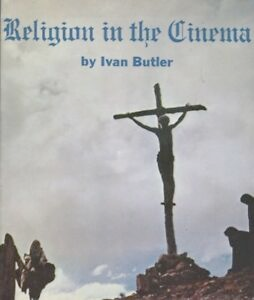Ivan Butler's Religion in the Cinema (London: Zwemmer and New York: Barnes, 1969), which should have been titled Christianity and Anti-Christianity in the Cinema, is an early film studies attempt to explore the relationship between Christianity and, for the most part, though Butler takes brief excursions to Mexico and Brasil largely for aesthetic reasons, European and American cinema. In eleven chapters Butler explores the impact of Bible stories such as the Delilah and Samson tale and the Moses story; Christian figures such as nuns, monks, priests, saints, preachers, mystics, and sinners; Christian derived allegories and parables, Christian settings, Christian demonic figures; and comedy and satire on the cinema.
Butler's monograph provides a useful jumping off spot for anyone interested in the relationship between Christianity and the cinema thanks to its typological and historical approach. However, Its mix of journalistic film criticism and film history is a bit too much grounded in aesthetics for my taste, however, though one has to, I suppose select films on some basis and whether aesthetics is superior to popularity is an open question. Like so many scholarly books and monographs on the cinema it is overlong. It's selective encyclopedic form would come off better, I think, in article form rather than monograph form. While informative Butler's short book is now dated and anemic in its study of religous horror films like The Exorcist (1973) and The Omen (1976), films of possession and the coming of the Beast that have become ever more prominent and popular in the post-new new Hollywood. After reading Butler's monograph I am still not sure whether religion in the cinema constitutes a genre, a tone, a set of images, specific settings, or all of the above.

No comments:
Post a Comment